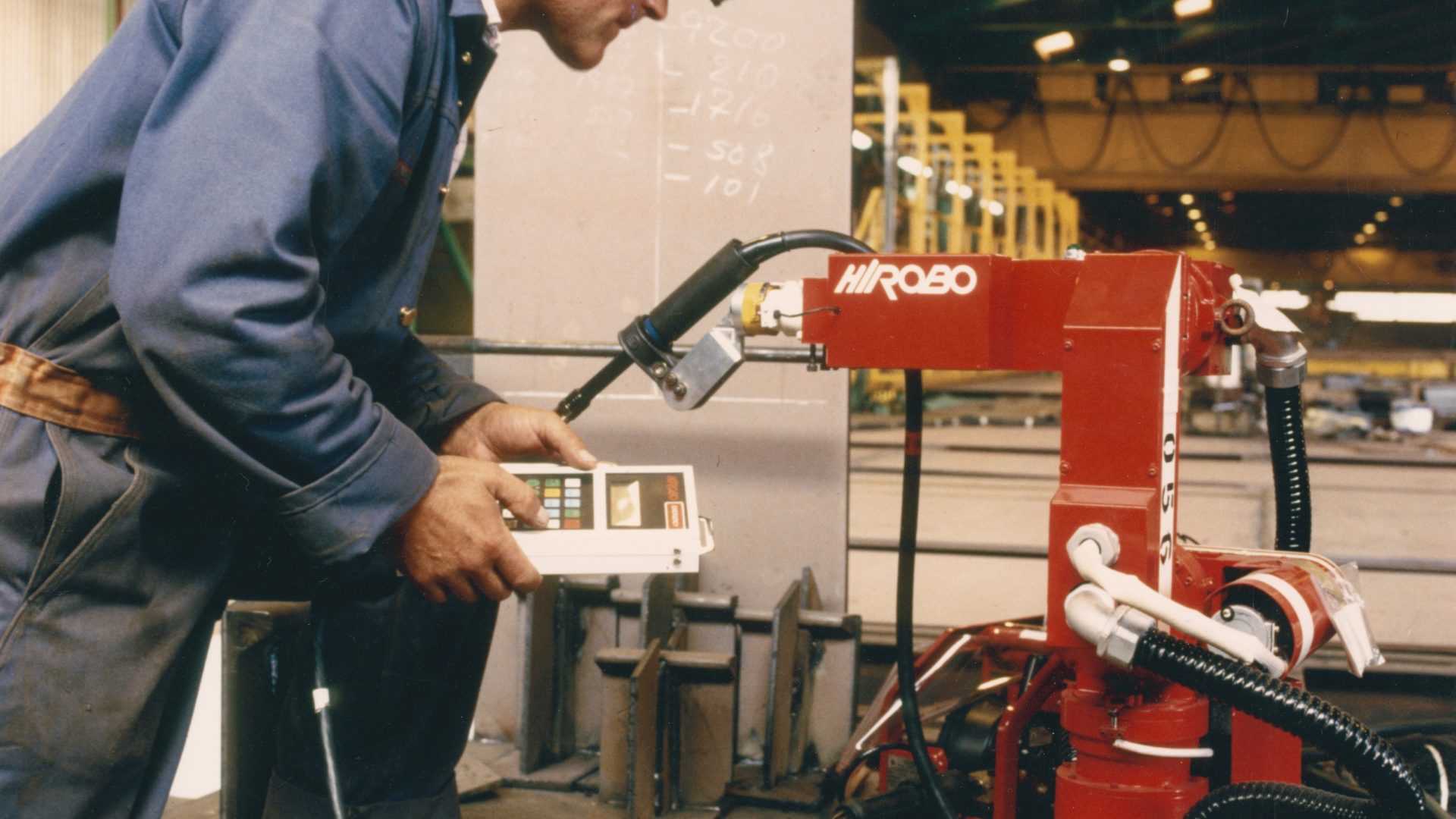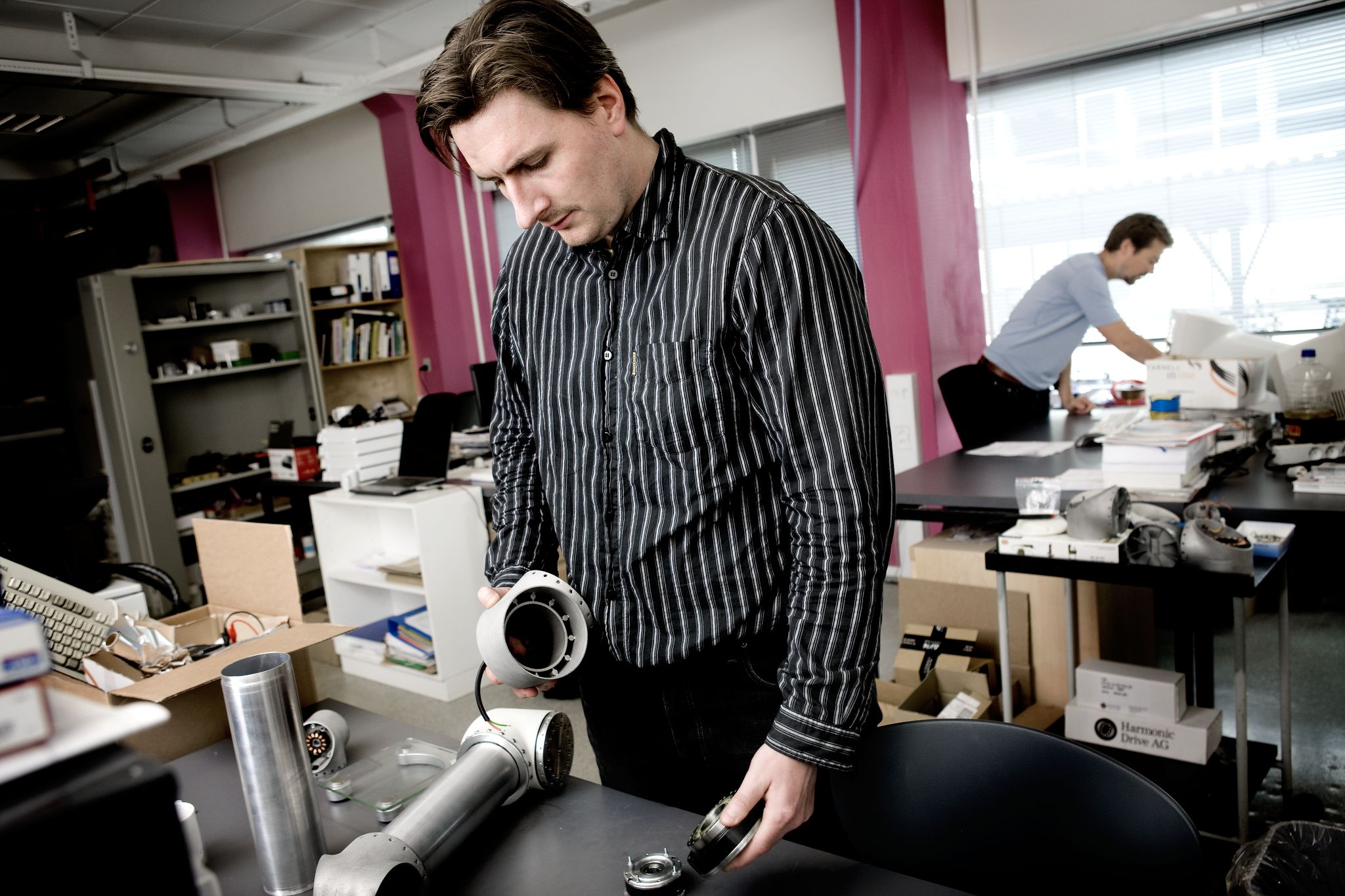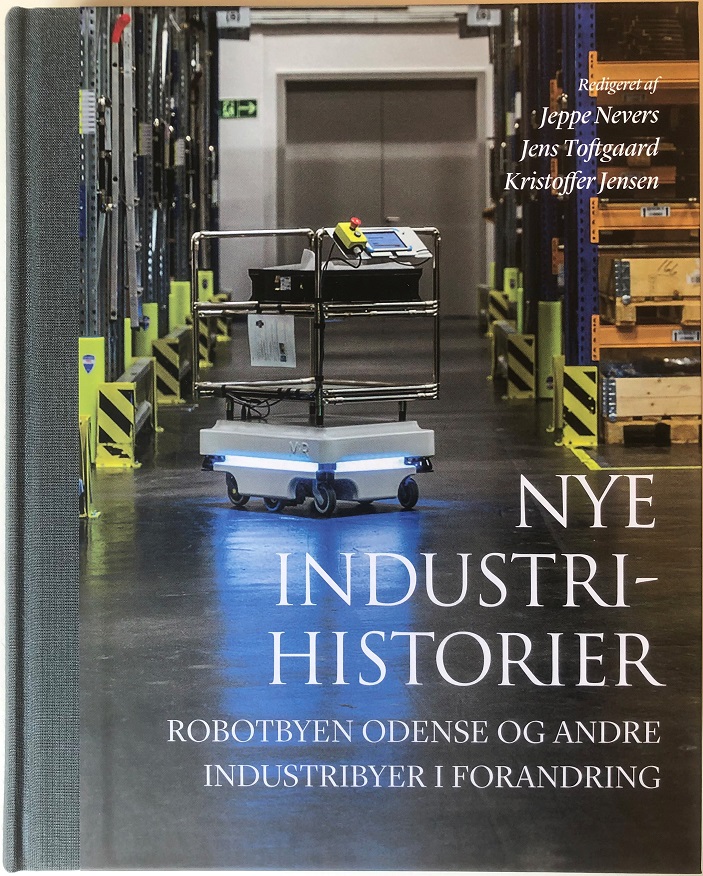
Robots, Clusters and Narratives
The project is financed by the THE VELUX FOUNDATIONS.
In recent years, the global financial crisis and the “what should we live on” discussion have led to a renaissance of the idea that economic growth depends on a strong manufacturing sector. But to integrate industrial production into the now dominant narrative of Denmark as a knowledge society is not without problems. The concept of industry seems to be burdened by the crisis of old industry, and although industry has moved rapidly into a high-tech phase, this has not really filtered down into the ordinary mindset.
This is the challenge facing the project – Industry in the 21st Century. It will be achieved through a research and dissemination project which, with the successful Funen robot industry as a starting point, will investigate and communicate the development of knowledge-intensive industry in Denmark and the connection with narratives and identity.
One path in the project will follow an industrial historical study of the robot cluster with a focus on networking, knowledge and production with inspiration from the cluster theory. The second path of the project focuses on the formation of new identity-creating narratives in the light of deindustrialization. This will include city stories in Odense and Horsens.

The company, Universal Robots, is a driving force in Odense’s robot cluster with their successful collaborative robots.
Industry in the 21st Century is a collaboration between Odense City Museums, the Danish Museum of Industry in Horsens, and the Centre for Maritime and Business History at the University of Southern Denmark. The project includes research, teaching and museum exhibition. Teaching courses for youth education have been developed together with Odense Technical High School and Horsens High School. In 2019, Møntergården, and subsequently the Industrial Museum, were the settings for a pop-up exhibition about Odense’s robot cluster. The project idea and the methods of dissemination are described in the article Robotbyen Odense ( The Robot City Odense) in Danish.
The research results are compiled in the book Nye industrihistorier. Robotbyen Odense og andre industribyer i forandring (New Industrial Stories. The robot city Odense and other changing industrial cities). It was published in the autumn of 2020 by The University Press of Southern Denmark.

In 12 chapters, the book takes a closer look at the development of robot companies from their roots in robot welding at the Lindø shipyard, to a modern industry with strong ties to the university and the municipality’s cluster collaboration. The book contains an analysis of the current composition of the cluster and a description of the museum’s collection of documentation and museum objects from the many large and small robot companies. Odense’s identity and the story of the robot city are also explored. In just a few years, the growth in the robotics industry has turned the story of Odense from a crisis-stricken old industrial city to the centre of a new high-tech industrial cluster. To highlight the history of Odense, several chapters address the industry’s change in Denmark and similar developments in other traditional industrial cities such as Horsens, Aalborg and Esbjerg. Finally, the book discusses the current role of industry and its place in local and national historical identity.
The book – Nye industrihistorier. Robotbyen Odense og andre industribyer i forandring is available for purchase in the museum shop at Møntergården or direct from The University Press of Southern Denmark
In English:
Lamberty, Julian and Jeppe Nevers, “The Entrepreneurial State in Action: The Danish Robotics Cluster and the Role of the Public Sector.” Enterprise & Society, 2020, 1–31. doi:10.1017/eso.2020.36.
doi:10.1017/eso.2020.36.
Industry in the 21st Century is a collaboration between Odense City Museums, the Danish Museum of Industry in Horsens, and the Center for Maritime and Business History at the University of Southern Denmark.
The project is led by: Jens Toftgaard, cultural heritage director at Odense City Museums; Kristoffer Jensen, museum director at the Danish Museum of Industry; and Jeppe Nevers, professor and center manager at the Center for Maritime and Business History.
In addition to the project leaders, seven researchers and communicators from the three institutions participate: Julian Lamberty, postdoc at the Department of History, SDU; David H. Olsen, museum inspector, DIH; Camilla Schjerning, museum inspector, OBM; Sissel B. Fossat, researcher, OBM; Sally Thorhauge DIH; and Dyveke Skov Larsen, museum inspector, OBM; Mette Stauersbøl Mogensen, museum inspector OBM. René Schrøder Christensen, head of research and collection at the Danish Railway Museum; Søren Byskov, Southwest Jutland Museums; and Morten Pedersen, head of department at the North Jutland Historical Museum, will also participate with specific research contributions.
The research project is funded by the THE VELUX FOUNDATIONS’ museum investment of 4.5 million Danish kroner.
The project runs from 2017 to 2021.